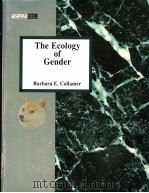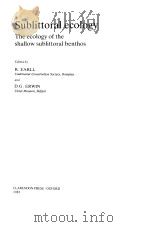《THE SOCIAL ECOLOGY OF CRIME》
| 作者 | 编者 |
|---|---|
| 出版 | 未查询到或未知 |
| 参考页数 | 221 |
| 出版时间 | 1986(求助前请核对) 目录预览 |
| ISBN号 | 038796231X — 求助条款 |
| PDF编号 | 811793128(仅供预览,未存储实际文件) |
| 求助格式 | 扫描PDF(若分多册发行,每次仅能受理1册) |

Chapter 1Key Issues in the Social Ecology of CrimeJames M. Byrne and Robert J. Sampson1
Shaw and McKay Revisited1
The Data Source Controversy7
Is Theory Integration Necessa?9
The Problem of Contextual Fallacies12
Conceptualization and Measurement Issues13
The Use of Cross-Sectional Versus Longitudinal Designs17
The Application of Social Ecology to Criminal-Justice Policy19
Part ⅠNeighborhood Level Analyses of Crime, Victimization,and Fear25
Chapter 2Neighborhood Family Structure and the Risk of Personal VictimizationRobert J Sampson25
Theoretical Framework26
Data and Method29
Findings33
Discussion45
Chapter 3Fear and Its Relationship to Crime, Neighborhood Deterioration, and Informal Social ControlStephanie W. Greenberg47
The Data49
Physical Deterioration, Perceived Disorder, and Fear50
Relative Effects on Fear of Crime, Physical Deterioration,and Informal Social Control51
Path Model of Neighborhood Characteristics, Crime and Control-Related Perceptions, and Fear55
Summary and Conclusions60
Chapter 4Delinquency Rates as Sources of Ecological ChangeRobert J. Bursik, Jr.63
Introduction63
Data and Initial Model Specification65
Findings70
Conclusions73
Part ⅡInterurban Analyses of Violent and Property Crime77
Chapter 5 Cities, Citizens, and Crime: The Ecological/Nonecological Debate ReconsideredJames M. Byrne77
Introduction and Overview77
Research Procedures82
Findings87
Conclusions94
Implications101
Chapter 6 Age, Sex, Race, and Arrest Trends for 12 of the Nation’s Largest Central CitiesRoland Chilton102
Data and Method104
Analysis105
Discussion112
Chapter 7 Urban Crime Rates: Effects of Inequality, Welfare Dependency, Region, and RaceRichard Rosenfeld116
Data and Method117
Strain, Relative Deprivation, and Crime117
Control, Welfare Dependency, and Crime119
Culture and Crime122
Southern Violence123
Race and Crime124
Conclusions127
Implications129
Part ⅢThe Impact of Ecological Factors on Decision Making and Policy in the Criminal Justice System133
Chapter 8Person-Environment Interactions in the Prediction of RecidivismStephen D. Gottfredson and Ralph B. Taylor133
Introduction133
Propositions Based on the Literature Reviewed138
Methods139
Measurement Issues140
Analytic Strategy143
Preliminary Findings144
Summary and Limitations152
Research Futures: An Interactionist Approach to Recidivism153
Chapter 9Firearms Ownership and Violent Crime:A Comparison of Illinois CountriesDavid J. Bordua156
Introduction156
Measurement163
Bivariate Results: General Ownership166
Bivariate Results: Ownership Types169
Multivariate Results: The Firearms Variables in a Model of Violent Crime172
Household Firearms178
Some Considerations of Measurement180
Deadliness and Percentage Use of Firearms182
Summary and Conclusions187
References189
Author Index209
Subject Index215
1986《THE SOCIAL ECOLOGY OF CRIME》由于是年代较久的资料都绝版了,几乎不可能购买到实物。如果大家为了学习确实需要,可向博主求助其电子版PDF文件。对合法合规的求助,我会当即受理并将下载地址发送给你。
高度相关资料
-

- THE PSYCHOLOGY OF CRIME A SOCIAL SCIENCE TEXTBOOK
- 1993 CAMBRIDGE UNIVERSITY PRESS
-

- THE BUSINESS OF CRIME
- WESTVIEW PRESS
-

- SOCIAL ECOLOGY AFTER BOOKCHIN
- 1998 THE GUILFORD PRESS
-

- MICROBIAL ECOLOGY OF THE PHYLLOPLANE
- 1981 Academic Press
-
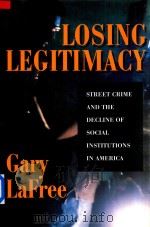
- Losing Legitimacy Street Crime and the Decline of Social Institutions in America
- 1998 Westview Press
-

- CRIME AND SOCIAL JUSTICE
- 1981 MACMILLAN PRESS LTD
-

- THE ECONOMICS OF CRIME
- 1980 SCHENKMAN PUBLISHING COMPANY
-
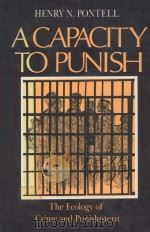
- A CAPACITY TO PUNISH THE ECOLOGY OF CRIME AND PUNISHMENT
- 1984 INDIANA UNIVERSITY PRESS
-
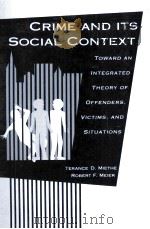
- CRIME AND ITS SOCIAL CONTEXT
- 1994 STATE UNIVERSITY OF NEW YORK PRESS
-
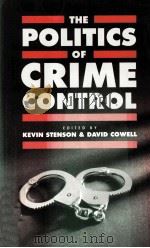
- THE POLITICS OF CRIME CONTROL
- 1985 SAGE PUBLICATIONS
提示:百度云已更名为百度网盘(百度盘),天翼云盘、微盘下载地址……暂未提供。➥ PDF文字可复制化或转WORD

